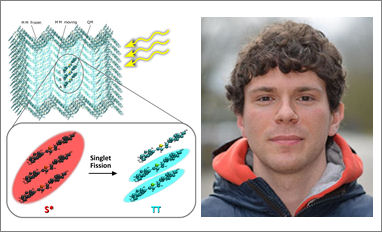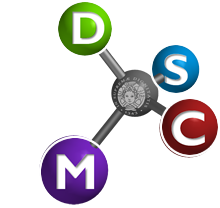 Congratulations to our Ph.D. student Davide Accomasso for his scientific publication on singlet fission, an interesting photophysical process whereby a singlet excited state (S*), typically generated by absorption of one photon, is converted into two triplet excited states (TT), each located on one chromophore.
Congratulations to our Ph.D. student Davide Accomasso for his scientific publication on singlet fission, an interesting photophysical process whereby a singlet excited state (S*), typically generated by absorption of one photon, is converted into two triplet excited states (TT), each located on one chromophore.
In this work, the authors present simulations of singlet fission in crystals of 2,5-bis(fluorene-9-ylidene)-2,5-dihydrothiophene (ThBF). The simulations, carried out using the surface hopping method, are based on quantum mechanics/molecular mechanics (QM/MM) schemes in which either two or three ThBF molecules are inserted in the QM region and embedded in their MM crystal environment. The study shows how the singlet fission dynamics and quantum yield can be affected by extending the electronic excitation beyond the minimal model of two interacting molecules (i.e. the dimer). In particular, when three molecules were inserted in the QM region, the predicted singlet fission quantum yield was of ~204%, which exceeds both the one extracted from the simulations based on two QM molecules (~179%) and the theoretical upper limit of 200% for the dimer-based model of singlet fission.
Davide's work, conducted under the supervision of professors Giovanni Granucci and Maurizio Persico and with the contribution of Meilani Wibowo,
is available at: https://aip.scitation.org/doi/full/10.1063/5.0009914


